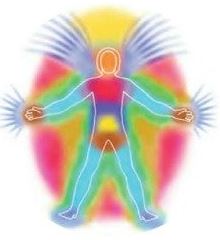Following the success of Barbara Mohr’s ‘Cosmic Ordering’[1] and Rhonda Byrne’s ‘The Secret’[2] in 2006, the ancient spiritual Law known as the Law of Attraction has come to the fore. It is enshrined in Buddhism, Taoism and the Vedic and Hebrew scriptures. In the Hebrew Scriptures King Solomon went so far as to say, ‘For as a man thinketh in his heart, so is he,’[3] a message constantly reiterated in the New Testament.
At first glance these modern interpretations appear to suggest that you can enjoy perfect health, acquire massive riches and perform miracles just by asking the ‘universe’ for what you want and believing without question that it’s already yours – despite any appearances to the contrary. Don’t concern yourself with the ‘how’ – let the universe take care of the details. When the time is right, you will receive exactly what you asked for.
In the context of healing, this recipe has appeared to work for some people, but, of course, nothing is ever that simple. Sure, the same universe that makes a person unwell also has the means to cure them, as long as they are willing to do something for themselves. When the right causes are laid, the right effects surely follow.
The problem is, we are never in control of all the causes. You can eat all the right foods, exercise, regularly detox, control your thoughts by denying illness and affirming health, constantly assure yourself that you are fit and well, young and healthy, and still contract a seriously illness.
Research has revealed correlations between certain ways of thinking and believing and the restoration of good health after illness. For example, the Institute of Noetic Sciences identified the factors that characterise ‘spontaneous remissions’. Among them were taking full personal responsibility, facing up to the crisis, looking for meaning in the illness, choosing a new, more fulfilling way of life, learning to express their emotions, close family relationships, setting one’s own goals and reappraising old beliefs that are no longer helpful or appropriate to their situation. Emphasis was also placed on relieving stress and seeking a renewed spiritual awareness through a spiritual practice such as prayer or meditation.
These are correlations; nothing is certain. These physical and mental disciplines massively increase your chances of good health, but they can never guarantee it. Because life’s not like that!
©Feelinggoodallthetime 28.3.2017
Follow us on Facebook and Twitter @Feelinggoodatt
How to Books, 2007
[1] Barbara Mohr, The Cosmic Ordering Service, Mobius, 2006, ISBN 978-0340933329
[2] Rhonda Byrne, The Secret, Simon and Schuster, 2006, ISBN 978-0340933329
[3] Proverbs 23: 7 KJV




